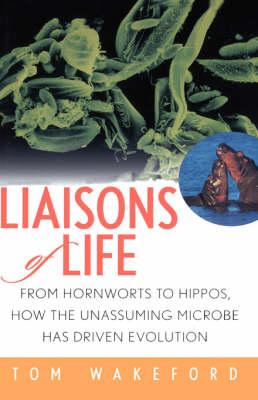Overview
A fascinating exploration of symbiosis at the microscopic level and its radical extension of Darwinism Microbes have long been considered dangerous and disgusting-in short, ""scum."" But by forming mutually beneficial relationships with nearly every creature, be it alga with animals or zooplankton with zebrafish, microbes have in fact been innovative players in the evolutionary process. Now biologist and award-winning science writer Tom Wakeford shows us this extraordinary process at work. He takes us to such far-flung locales as underwater volcanoes, African termite mounds, the belly of a cow and even the gaps between our teeth, and there introduces us to a microscopic world at turns bizarre, seductive, and frightening, but ever responsible for advancing life in our macroscopic world. In doing so he also justifies the courage and vision of a series of scientists-from a young Beatrix Potter to Lynn Margulis-who were persecuted for believing evolution is as much a matter of interdependence and cooperation as it is great too-little-told tales of evolutionary science.
Full Product Details
Author: Tom Wakeford
Publisher: John Wiley and Sons Ltd
Imprint: John Wiley & Sons Inc
Dimensions:
Width: 14.70cm
, Height: 2.10cm
, Length: 22.60cm
Weight: 0.450kg
ISBN: 9780471399728
ISBN 10: 0471399728
Pages: 224
Publication Date: 20 March 2001
Audience:
General/trade
,
College/higher education
,
Professional and scholarly
,
General
,
Undergraduate
Format: Hardback
Publisher's Status: Out of Print
Availability: Out of print, replaced by POD

We will order this item for you from a manufatured on demand supplier.
Reviews
""Wakeford...fires a shot across the bow of contemporary Darwinism with this compelling defense of symbiosis, the notion that evolution is driven as much by interdependence as by competition and that microbes are its leading innovators."" (Publishers Weekly) ""a marvellous read, thoroughly deserving a place on the bookshelves of every school library, where receptive minds will find much stimulation. Highly recommended."" (Journal of Biological Education, Vol.35, No. 4, 2001) ""...a crisp, highly readable book..."" (Daily Telegraph, 17 November 2001) ""...cheery and informal...vivid recollections..."" (Biologists, Vol.48 No.6 2001) ""...there is much to learn from this book..."" (Times Higher Literary Supplement, 26 April 2002)
Wakeford...fires a shot across the bow of contemporary Darwinism with this compelling defense of symbiosis, the notion that evolution is driven as much by interdependence as by competition and that microbes are its leading innovators. (Publishers Weekly) a marvellous read, thoroughly deserving a place on the bookshelves of every school library, where receptive minds will find much stimulation. Highly recommended. (Journal of Biological Education, Vol.35, No. 4, 2001) ...a crisp, highly readable book... (Daily Telegraph, 17 November 2001) ...cheery and informal...vivid recollections... (Biologists, Vol.48 No.6 2001) ...there is much to learn from this book... (Times Higher Literary Supplement, 26 April 2002)
"""Wakeford...fires a shot across the bow of contemporary Darwinism with this compelling defense of symbiosis, the notion that evolution is driven as much by interdependence as by competition and that microbes are its leading innovators."" (Publishers Weekly) ""a marvellous read, thoroughly deserving a place on the bookshelves of every school library, where receptive minds will find much stimulation. Highly recommended."" (Journal of Biological Education, Vol.35, No. 4, 2001) ""...a crisp, highly readable book..."" (Daily Telegraph, 17 November 2001) ""...cheery and informal...vivid recollections..."" (Biologists, Vol.48 No.6 2001) ""...there is much to learn from this book..."" (Times Higher Literary Supplement, 26 April 2002)"
Author Information
TOM WAKEFORD is a biologist and writer based at the University of Sussex, U.K. He received his degree in natural sciences from Cambridge University and his Ph.D. in evolutionary biology from the University of York. His first book, Science for the Earth, was published by Wiley in 1995. In 1996 he was named Young Science Writer of the Year.




